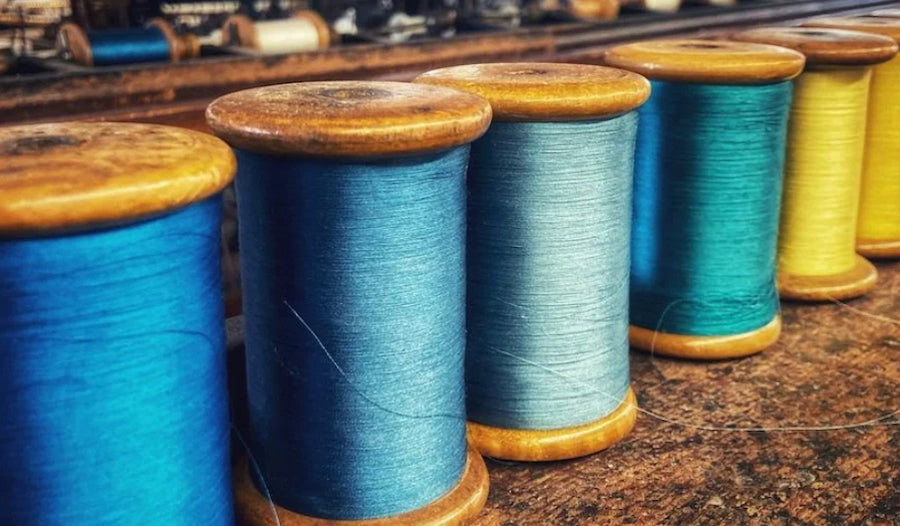
KEEPING TIME
Image: Colourful bobbins. Courtesy of Whitchurch Silk Mill.
Whitchurch Silk Mill is the oldest silk mill in the UK, built in 1813 on land owned by the Dean and Chapter of Winchester Cathedral. Its famous mill clock has been keeping time for over 200 years, watching over the preservation of traditional heritage silk weaving skills.
 Image: The mill and race in 1955. Courtesy of Whitchurch Silk Mill.
Image: The mill and race in 1955. Courtesy of Whitchurch Silk Mill.
In its time, Whitchurch has woven the 22 colours of silk lining for Burberry’s famous raincoats, as well as the colours for Ede & Ravenscroft’s legal and academic gowns.
 Image: Fabric production at Whitchurch Silk Mill. Courtesy of Whitchurch Silk Mill.
Image: Fabric production at Whitchurch Silk Mill. Courtesy of Whitchurch Silk Mill.
Today, the mill, with its undershot water wheel and collection of historic machinery, is still producing silk weaving on looms that date back to the 1890s. The weaving shed’s layout was historically designed to fit many looms in little space, increasing productivity and reduce running costs.
 Image: At work in Whitchurch Silk Mill. Photo: Greatwestway.co.uk
Image: At work in Whitchurch Silk Mill. Photo: Greatwestway.co.uk
It can take at least three weeks to thread up a loom before weaving can begin. The weaving itself is a relatively quick process, producing five metres of plain silk taffeta a day, but delivery of a 150m order of silk can take up to 16 weeks.
It’s worth the wait. By weaving exclusive fabrics for the luxury market, Whitchurch are securing the future of the methods, skills, traditions, and knowledge that have inhabited the mill since 1815, when their silk production began.
 Image: Colourful bobbins. Courtesy of Whitchurch Silk Mill.
Image: Colourful bobbins. Courtesy of Whitchurch Silk Mill.
The mill has kept pace in other ways, too— embracing social media to engage and educate the public in its unique heritage. You can listen to their podcast series here.
 Image: Fabric from Whitchurch Silk Mill. Courtesy of Whitchurch Silk Mill.
Image: Fabric from Whitchurch Silk Mill. Courtesy of Whitchurch Silk Mill.
Sue Tapliss, Director of Whitchurch Silk Mill, will join the SELVEDGE panel to discuss all things silk, today.
